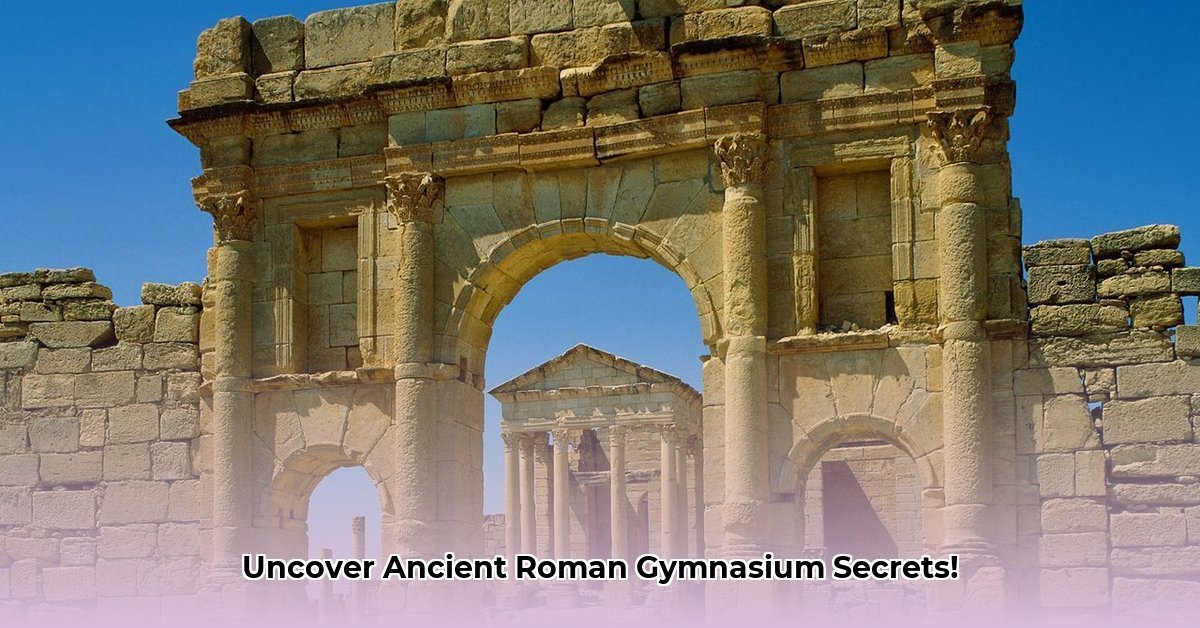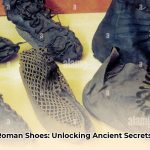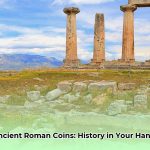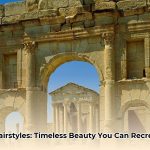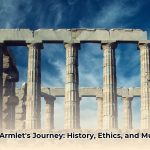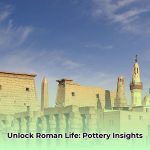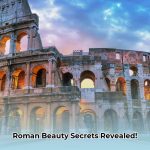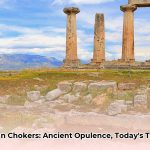Ever wondered how the concept of physical fitness and intellectual pursuit intertwines with social life? Let’s journey back to the ancient world and explore the gymnasium, a multifaceted institution that was far more than just a place for exercise. From its foundational role in ancient Greece to its remarkable transformation in Rome, the gymnasium shaped education, daily life, and societal values, leaving an indelible mark that resonates even today. Understanding its evolution reveals a captivating story of adaptability, cultural exchange, and human aspiration for holistic development.
The Greek Gymnasium: Where Mind and Body Converged
The origins of the gymnasium trace back to 6th-century BCE Greece, where it began as a relatively simple, open-air training facility. The very name, gymnasion (γυμνάσιον), derives from gymnos (γυμνός), meaning “naked,” reflecting the practice of male athletes exercising unclothed. These grounds served as essential training sites for warriors and competitors in the prestigious Panhellenic Games, such as those held at Olympia, Delphi, and Nemea. Under the guidance of paidotribes (athletic instructors) and with the assistance of aleiptes (anointers) who applied oil for limbering and protection, young men honed skills in wrestling, running, boxing, discus, and javelin. Regular competitions, like the Hermaia, further refined their strength, discipline (eutaxia), and endurance (philoponia).
However, the Greek gymnasium soon transcended its purely physical function. It evolved into a vibrant intellectual and social hub, serving as a de facto university where citizens of all ages could gather. Iconic institutions, such as Plato’s Academy and Aristotle’s Lyceum in Athens, were often situated adjacent to or within gymnasia, utilizing these spaces for profound philosophical discussions, lectures, and debates. This symbiotic relationship underscored the Greek ideal of kalokagathia—the harmonious development of both physical beauty and moral goodness. Plato’s dialogues frequently depict these gymnasia as settings for intellectual discourse, highlighting the complex mentorship relationships (eromenos and erastes) that fostered both physical and mental growth.
The Hellenistic Expansion and Formalization
During the Hellenistic period, the gymnasium became a standardized and crucial institution for spreading Greek culture across newly conquered territories. These were no longer informal training spots but meticulously managed complexes, typically overseen by a dedicated civic official known as a gymnasiarch. This magistrate was responsible for the facility’s general administration, accounting, and even imposing fines or physical punishment for rule-breakers. Strict regulations governed participation: freeborn males, often up to the age of 30, were admitted, while slaves, freedmen, tradesmen, and the “physically unfit” (apalaistroi) were explicitly excluded. Women were universally prohibited.
Architecturally, Hellenistic gymnasia became elaborate complexes. The original open exercise area was often enclosed by colonnaded walkways (stoas), providing shaded areas for discussion and relaxation. A central peristyle often defined the palaistra, a specific area for wrestling. Further additions included washrooms with cold running water, bathtubs, an oiling room (elaiothesion), fountains, and shrines. Nearby, extra sporting facilities emerged, such as outdoor running tracks (paradromis) and covered running areas (xystos) to protect athletes from the elements. Some larger cities, like Pergamon, even integrated full stadiums, with the Pergamon gymnasium covering an impressive 30,000 square meters. These grander structures were often adorned with decorative sculptures and statues dedicated to patrons like Hercules or Hermes, or to city benefactors.
The Roman Transformation: From Training Grounds to Social Sanctuaries
The Romans, renowned for their pragmatism and impressive engineering, readily adopted the Greek gymnasium concept but re-shaped it to fit their distinct cultural values. While still maintaining elements of physical exercise and intellectual pursuit, the Roman interpretation placed a much greater emphasis on bathing, leisure, and social interaction. These monumental structures, often referred to as thermae (public bathhouses) when on a grand scale, became central to Roman urban life.
Unlike the Greek gymnasia that sometimes remained distinct, Roman baths often integrated the functions of the gymnasium directly. They featured an array of amenities: multiple bathing pools (including hot caldaria, warm tepidaria, and cold frigidaria), large swimming pools (natationes), extensive libraries, and meticulously landscaped gardens. Citizens flocked to these complexes not just to cleanse and exercise, but to socialize, conduct business, read, and relax. Some sources suggest Romans occasionally referred to these athletic components by terms like schola palaestrae, though the overarching identity shifted toward the grand thermae. In fact, Emperor Nero himself dedicated a gymnasium in Rome between 60 and 62 CE, a beautiful building renowned for its adorned statues. Tragically, it met a spectacular end in 62 or 63 CE, struck by a lightning bolt that reportedly melted a prominent bronze statue of Nero himself, leaving a shapeless puddle of metal.
The Roman adaptation showcased their exceptional engineering prowess. Roman bathhouses boasted sophisticated heating systems known as hypocausts, which circulated hot air beneath the floors and through the walls, and advanced water management infrastructure that supplied and drained vast quantities of water. Crucially, these facilities were far more accessible than their Greek predecessors, often offering affordable (or even free) bathing and exercise opportunities to a much broader segment of the population, including legionnaires who valued physical conditioning. This accessibility further cemented their role as vital communal spaces.
Despite the pervasive Roman influence, Greek cities within the Roman Empire often maintained their traditional gymnasia, deliberately preserving their unique cultural identity and educational traditions. This highlights the selective nature of cultural exchange, where certain elements are embraced while others are steadfastly maintained as symbols of heritage.
Architectural Layouts and Daily Life: A Glimpse Inside
To truly appreciate the functionality of these ancient institutions, we can turn to primary sources. The Roman author and architect Vitruvius, in his Ten Books of Architecture, provides a detailed description of the ideal palaestra layout, which was a core component of the gymnasium complex. This account offers a rare insight into the meticulous planning behind these structures:
“Next, although the building of palaestrae is not usual in Italy, I think it best to set forth the traditional way, and to show how they are constructed among the Greeks. The square or oblong peristyle in a palaestra should be so formed that the circuit of it makes a walk of two stadia, a distance which the Greeks call the δίανλος. Let three of its colonnades be single, but let the fourth, which is on the south side, be double, so that when there is bad weather accompanied by wind, the drops of rain may not be able to reach the interior.
In the three colonnades construct roomy recesses (A) with seats in them, where philosophers, rhetoricians, and others who delight in learning may sit and converse. In the double colonnade let the rooms be arranged thus: the young men’s hall (B) in the middle; this is a very spacious recess (exedra) with seats in it, and it should be one third longer than it is broad. At the right, the bag room (C); then next, the dust room (D); beyond the dust room, at the corner of the colonnade, the cold washing room (E), which the Greeks call λουτρόν. At the left of the young men’s hall is the anointing room (F); then, next to the anointing room, the cold bath room (G), and beyond that a passage into the furnace room (H) at the corner of the colonnade. Next, but inside and on a line with the cold bath room, put the vaulted sweating bath (I), its length twice its breadth, and having at the ends on one side a Laconicum (K), proportioned in the same manner as above described, and opposite the Laconicum the warm washing room (L). Inside a palaestra, the peristyle ought to be laid out as described above.
But on the outside, let three colonnades be arranged, one as you leave the peristyle and two at the right and left, with running-tracks in them. That one of them which faces the north should be a double colonnade of very ample breadth, while the other should be single, and so constructed that on the sides next the walls and the side along the columns it may have edges, serving as paths, of not less than ten feet, with the space between them sunken, so that steps are necessary in going down from the edges a foot and a half to the plane, which plane should be not less than twelve feet wide. Thus people walking round on the edges will not be interfered with by the anointed who are exercising.
This kind of colonnade is called among the Greeks ξυστóς, because athletes during the winter season exercise in covered running tracks. Next to this “xystus” and to the double colonnade should be laid out the uncovered walks which the Greeks term παραδρομίδες and our people “xysta,” into which, in fair weather during the winter, the athletes come out from the “xystus” for exercise. The “xysta” ought to be so constructed that there may be plantations between the two colonnades, or groves of plane trees, with walks laid out in them among the trees and resting places there, made of “opus signinum.” Behind the “xystus” a stadium, so designed that great numbers of people may have plenty of room to look on at the contests between the athletes.”
— Vitruvius, Ten Books of Architecture, Book V, Chapter 11.
This detailed account illustrates the complexity and purpose-driven design of these facilities. From dedicated spaces for philosophical discourse to specific rooms for anointing and various forms of bathing, the gymnasium was an integrated environment catering to diverse needs—physical, intellectual, and social.
Greek vs. Roman Gymnasia: A Comparative Exploration
The evolution of the gymnasium from Greece to Rome illuminates the dynamic interplay between culture and societal priorities. While sharing fundamental principles, their applications diverged significantly:
| Feature | Greek Gymnasium | Roman Gymnasium (Often Integrated with Thermae) |
|---|---|---|
| Primary Focus | Holistic Development: Rigorous athletic training, profound philosophical debates, and formal education (often considered central to civic life and intellectual growth). | Leisure & Socialization: Comprehensive bathing rituals, relaxation, light exercise, and extensive social interaction. While exercise was present, the emphasis shifted significantly towards public hygiene, comfort, and communal activity. Libraries and gardens within thermae still provided intellectual outlets. |
| Accessibility | Generally limited to freeborn male citizens of aristocratic or wealthy backgrounds; slaves, freedmen, and tradesmen were typically excluded. It served as a marker of social status and a sphere for elite male bonding and mentorship. | More broadly accessible to a wider range of citizens, including those of more modest means, though social distinctions within the complex still existed (e.g., separate changing rooms). The affordability, and sometimes even free entry, of public baths made them a crucial part of daily life for the masses, exemplifying Roman civic provision and a practical approach to public health. |
| Architectural Design | Started as simple, open-air spaces with packed earth; evolved into more complex structures featuring peristyles, colonnaded walkways (stoas), distinct wrestling areas (palaistra), running tracks (paradromis), and often incorporated philosophical schools or sacred precincts. Less focused on elaborate internal amenities. | Integrated into vast, architecturally complex bathhouse structures (thermae) that were engineering marvels. These featured sophisticated heating systems (hypocausts), intricate plumbing, multiple bathing rooms (hot, warm, cold), large swimming pools (natationes), lavish decorations with mosaics and sculptures, libraries, and landscaped gardens. Designed for comfort, grandeur, and efficiency. |
| Cultural Significance | Played a pivotal role in shaping Greek identity and promoting ideals of physical perfection (euexia) and intellectual excellence. It was a cornerstone of classical education and civic life, often symbolizing Greek cultural superiority and tradition, especially within the Hellenistic world. | Reflected core Roman values of hygiene, public amenity, and collective leisure. It became a powerful symbol of Roman civilization, urbanism, and engineering prowess. While adopting Greek elements, Romans pragmatically adapted them to serve their own societal structure, military needs, and emphasis on communal well-being. In former Greek territories, however, continued adherence to Greek gymnasium traditions sometimes served as a quiet assertion of local cultural identity under Roman rule. |
| Key Administrator | The gymnasiarch was a civic magistrate with significant authority over the gymnasium’s administration, finances, moral conduct, and even disciplinary actions (fines, flogging). | While specific administrators managed thermae, the grand scale often meant imperial or municipal oversight, integrating these complexes into broader urban planning and public works projects rather than a single, all-encompassing gymnasiarch role focused solely on the athletic and educational aspects. |
Enduring Legacy and Modern Relevance
The ancient gymnasium underscores the profound value placed on physical well-being, intellectual sharpness, and social connectivity in antiquity. Its evolution from a straightforward athletic training ground to a complex, multi-purpose social institution highlights its enduring influence on educational models, cultural norms, and societal structures. The core idea—that physical health, mental development, and social interaction are intrinsically linked—continues to resonate in contemporary educational and wellness initiatives. Modern gyms, sports centers, and community hubs are, in many ways, echoes of their ancient predecessors, reminding us that the pursuit of a well-rounded life is a timeless human endeavor.
The dynamic interplay between Greek foundational ideals and Roman pragmatic adaptations offers valuable insights for us today. It demonstrates how cultures adopt, transform, and integrate concepts to suit their unique needs and values, fostering innovation while sometimes creating distinct cultural expressions. The legacy of the ancient gymnasium is not just in ruins and texts, but in the very fabric of how we conceive of physical activity, social gathering, and the lifelong pursuit of knowledge.
